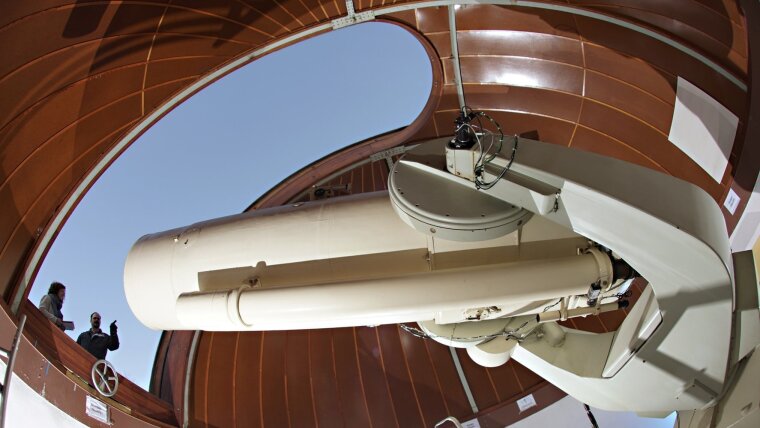
Recomended during the B.Sc. studies prior to the M.Sc. phase
- 5th term – Introduction to Astronomy
- 6th term – B.Sc. thesis in Astronomy/Astrophysics
Recommended at the beginning of the M.Sc. studies
Taking one of the two specializations:
- Observational/Experimental Astronomy/Astrophysics (Prof. Neuhäuser)
- Theoretical Astronomy/Astrophysics (Prof. Krivov)
Recommended plan of studies
| Term | Both specialisations | Observational Astrophysics (OA) | Theoretical Astrophysics (TA) |
| 1st winter term (1st or 2nd M.Sc. term) |
Physics of Stars (8) | Propedeutic Seminar OA** (4) | Celestial Mechanics (6) |
| 1st summer term (2nd or 1st M.Sc. term) |
Physics of Planetary Systems (8) Astronomical Practical Course (6) |
Observing Techniques (6) | Propedeutic Seminar TA** (4) |
| 3rd term | Introduction to Research Work* (15) Project planning* (15) |
Specialization lecture (6) Seminar Observations or Terra-Astronomy |
Specialization lecture (6) Seminar Dust, Small Bodies, and Planets |
| 4th term | M.Sc. Thesis* (30) |
Specialization lecture (6) Seminar Observations or Terra-Astronomy |
Specialization lecture (6) Seminar Dust, Small Bodies, and Planets |
The lecture and seminar courses during the first two terms are offered each year (credit points in parentheses). The lecture and seminar courses marked with * are mandatory and must be attended.
Of the two seminars marked with **, one must be attended.
Specialization lectures
- Cosmology (6)
- Extragalactic Astronomy (6)
- History of Astronomy (6)
- Laboratory Astrophysics (6)
- Milky Way (6)
- Neutron Stars (6)
- Radioastronomy (6)
- Solar System (6)
- Terra-Astronomy (6)
As a rule, these lectures are offered either annually or bi-annually
The teaching and research staff of the AIU will be happy to give individual advice about which courses are useful for your Masters thesis.